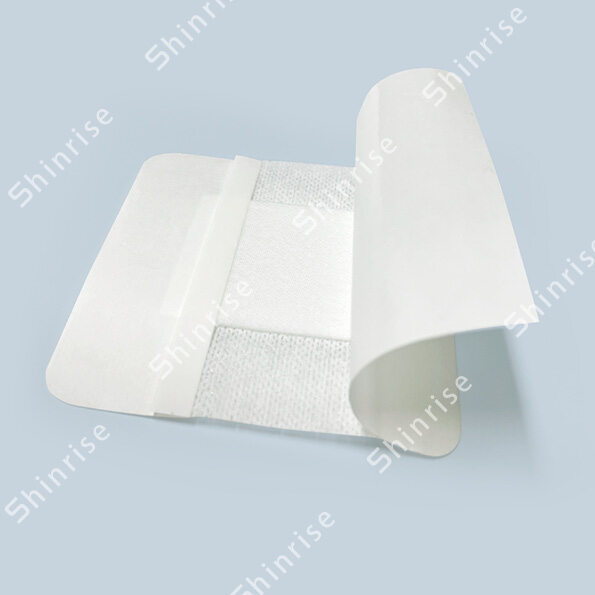Email cannot be empty
Password cannot be empty
Email format error
Email cannot be empty
Email already exists
6-20 characters(letters plus numbers only)
The password is inconsistent
Email format error
Email cannot be empty
Email does not exist
6-20 characters(letters plus numbers only)
The password is inconsistent


Medical Sodium Hyaluronate Dressing: Revolutionizing Wound Care
In the realm of modern medicine, wound care has evolved significantly, with innovations leading to improved healing outcomes. Among these advancements, the medical sodium hyaluronate dressing stands out as a powerful tool in the management of various wounds. This blog delves into the properties, applications, and benefits of sodium hyaluronate dressings, showcasing how they are transforming patient care.
Understanding Medical Sodium Hyaluronate
What is Sodium Hyaluronate?
Sodium hyaluronate is a naturally occurring substance in the human body, primarily found in connective tissues, skin, and cartilage. It plays a critical role in retaining moisture and facilitating tissue repair. The therapeutic use of sodium hyaluronate has gained traction in various medical fields, particularly in wound care.
The Role of Sodium Hyaluronate in Wound Healing
Sodium hyaluronate promotes a moist healing environment, which is essential for effective wound management. Its ability to retain water helps to keep the wound hydrated, thus accelerating the healing process. This is particularly beneficial for chronic wounds that often struggle to heal.
The Composition of Medical Sodium Hyaluronate Dressings
Key Ingredients
A medical sodium hyaluronate dressing typically consists of sodium hyaluronate combined with a polymer matrix that allows for controlled release and optimal absorption. This composition ensures that the dressing remains effective over an extended period.
Types of Dressings
There are various forms of sodium hyaluronate dressings available, including gels, films, and hydrocolloids. Each type serves specific purposes depending on the wound's characteristics and the desired healing environment.
Advantages of Medical Sodium Hyaluronate Dressings
Enhanced Moisture Retention
One of the primary benefits is their superior moisture-retaining properties. This feature is crucial in promoting cell migration and proliferation, leading to faster healing.
Reduced Pain and Discomfort
Patients often experience less pain and discomfort when using sodium hyaluronate dressings. The cushioning effect provided by the dressing protects the wound from external irritants, thereby minimizing pain during movement.
Decreased Infection Risk
By maintaining a moist environment, sodium hyaluronate dressings help create a barrier against pathogens. This reduces the risk of infection, which is a common complication in wound healing.
Compatibility with Other Treatments
Sodium hyaluronate dressings can be easily integrated with other treatments. For instance, they work well in conjunction with an elect hydro hydrocolloid thin dressing, allowing for comprehensive wound management.
Applications of Medical Sodium Hyaluronate Dressings
Chronic Wounds
Chronic wounds, such as diabetic ulcers and pressure sores, often require specialized care. The dressings are particularly effective in managing these types of wounds, promoting healing through their hydrating properties.
Surgical Wounds
In post-operative care, the use of sodium hyaluronate dressings can enhance recovery. Their moisture-retaining ability and reduced risk of infection make them an ideal choice for surgical sites.
Burns
For burn patients, managing pain and promoting healing are critical. Sodium hyaluronate dressings provide a soothing effect while facilitating a moist environment conducive to healing.
How to Use Medical Sodium Hyaluronate Dressings
Step-by-Step Application Guide
● Prepare the Wound: Clean the wound area thoroughly to remove any debris or contaminants.
● Apply the Dressing: Gently place the dressing over the wound, ensuring full coverage.
● Secure the Dressing: Use an appropriate adhesive or secondary dressing to keep the sodium hyaluronate dressing in place.
● Monitor the Wound: Regularly check the wound for signs of healing or infection, changing the dressing as needed.
Frequency of Change
The frequency of changing the dressing will depend on the wound's condition and the specific product used. Generally, sodium hyaluronate dressings can be left in place for several days, providing extended moisture retention without frequent changes.
Comparing Sodium Hyaluronate Dressings with Other Dressings
Hydrocolloid Dressings
While both sodium hyaluronate and hydrocolloid dressings provide moisture, sodium hyaluronate dressings offer superior hydration due to their high water-binding capacity. Hydrocolloid dressings, on the other hand, are often more occlusive.
Traditional Gauze Dressings
Traditional gauze dressings can dry out and stick to wounds, leading to pain upon removal. In contrast, the dressings maintain moisture and promote healing, making them a more advanced option for wound care.
Patient Experience and Satisfaction
User Testimonials
Patients who have used medical sodium hyaluronate dressings often report higher satisfaction levels due to the reduced pain and improved healing outcomes. Many appreciate the convenience of less frequent dressing changes, which enhances their overall experience during recovery.
Healthcare Provider Perspectives
Healthcare providers recognize the benefits of incorporating sodium hyaluronate dressings into wound care protocols. Their ability to promote healing while minimizing complications aligns with the goals of modern patient care.
Future Directions in Wound Care
Ongoing Research
Research into the applications of sodium hyaluronate in wound care continues to expand. Studies are investigating its potential benefits in various types of wounds and settings, aiming to further validate its effectiveness.
Innovations in Dressing Technology
The future of wound care may see advancements in dressing technologies, incorporating sodium hyaluronate in novel ways. Innovations could include smart dressings that monitor wound conditions in real time, providing even greater benefits for patient care.
Conclusion
The medical sodium hyaluronate dressing represents a significant advancement in wound care, offering numerous benefits for patients and healthcare providers alike. Its ability to maintain moisture, reduce pain, and lower infection risks makes it an invaluable tool in modern medicine. As research progresses and innovations continue, sodium hyaluronate dressings will likely play an even more prominent role in promoting healing and enhancing patient outcomes. By choosing the right dressing for each wound type, healthcare providers can ensure optimal care, leading to healthier and happier patients.

